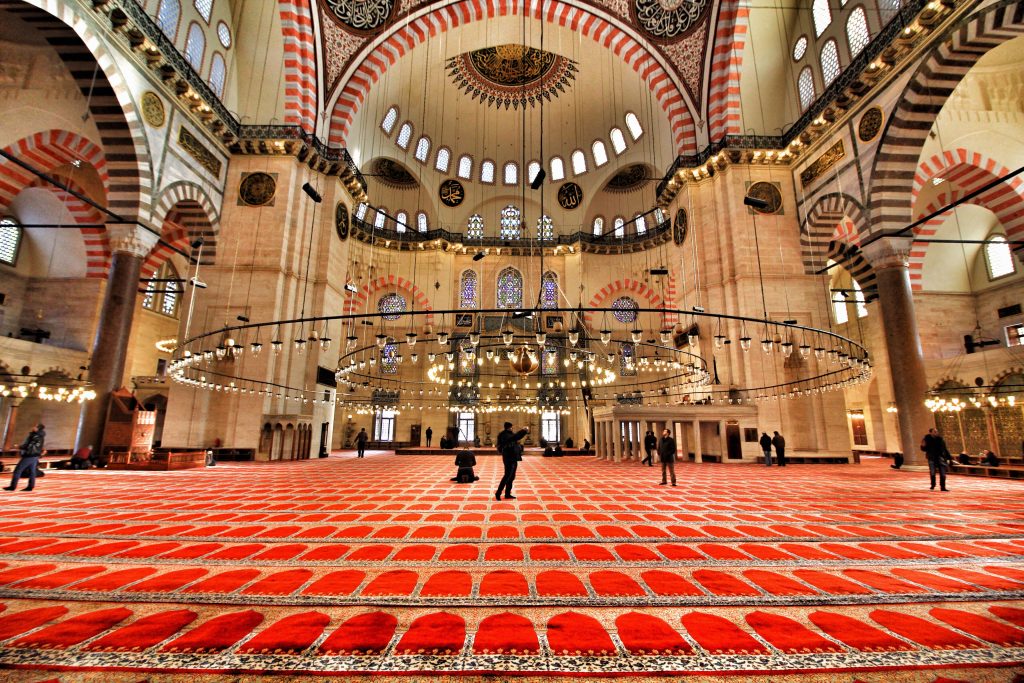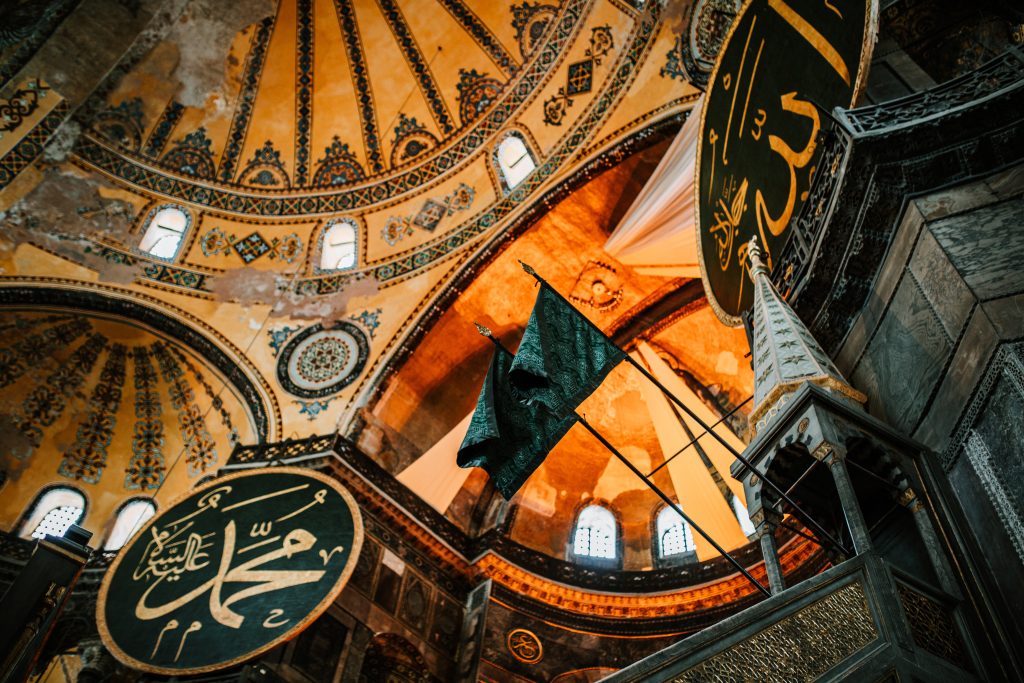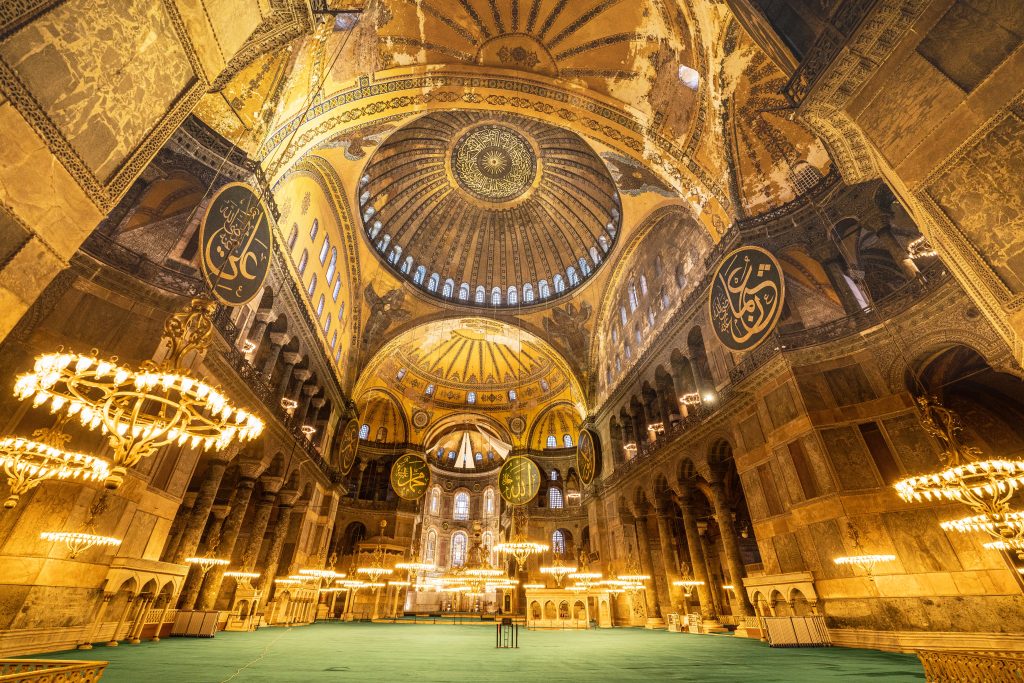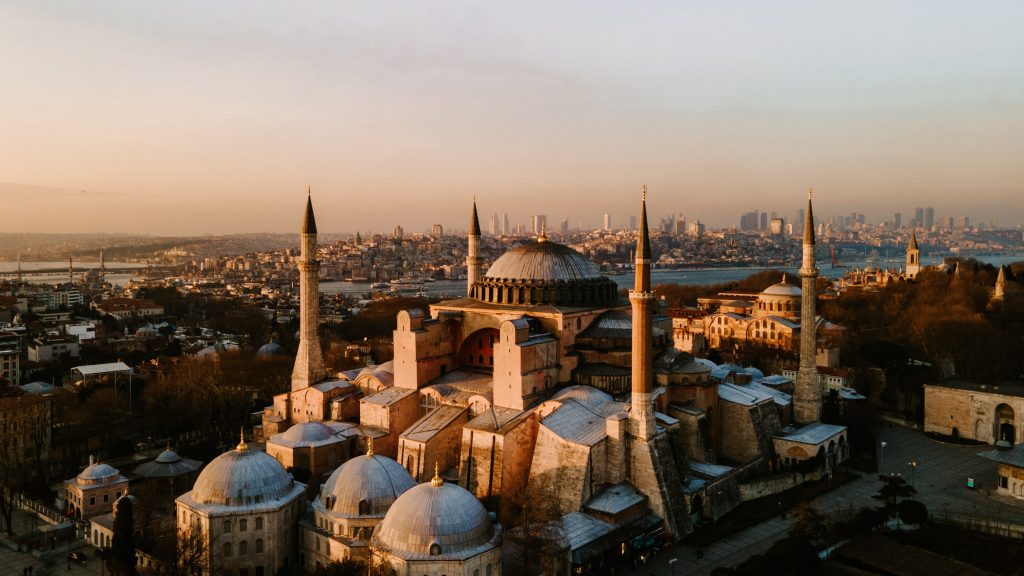Address
Binbirdirek, Dizdariye Çeşmesi Sk. No:49, 34122 Fatih
Phone:
+90 212 458 11 18
Mobile:
+90 533 404 85 15
Address
Binbirdirek, Dizdariye Çeşmesi Sk. No:49, 34122 Fatih
Phone:
+90 212 458 11 18
Mobile:
+90 533 404 85 15
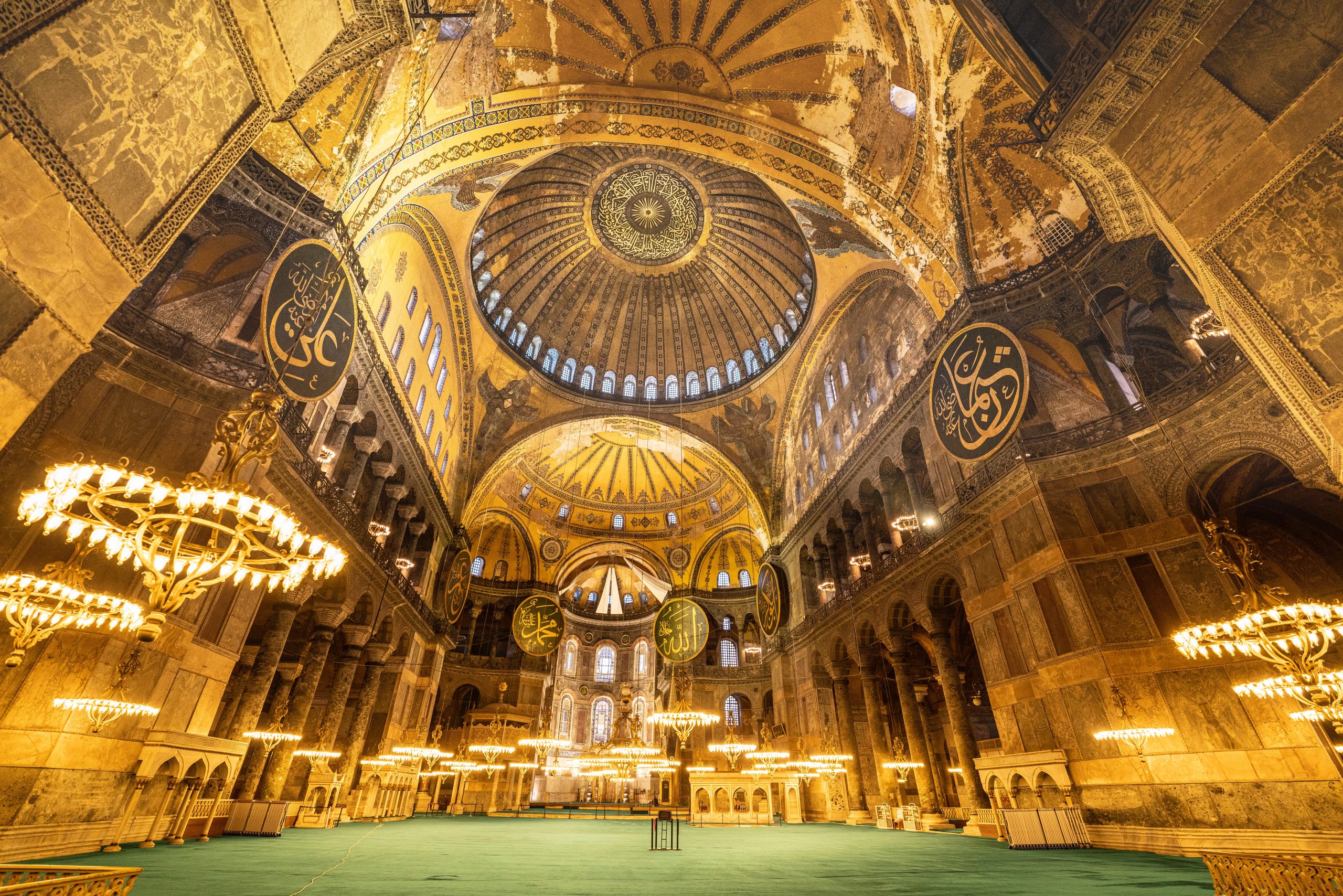
Hagia Sophia, (Greek: “Holy Wisdom”) Byzantine structure in Istanbul considered one of the world’s greatest buildings. Built as a church, it became a mosque, then a museum, and now a mosque again. It is a masterpiece of Byzantine architecture. Designed under Justinian I by Anthemius of Tralles and Isidorus of Miletus, the original building was completed in less than six years (532–537 ce). It combined a longitudinal basilica and a centralized building in a wholly original manner, with a huge main dome (rebuilt 563) supported on pendentives and semidomes on either side. In plan it is almost square. There are three aisles separated by columns with galleries above and great marble piers rising up to support the dome. The walls above the galleries, as well as the base of the dome, are pierced by windows, whose light obscures the supports, giving the impression that the canopy floats on air. Art historians consider the building’s beautiful mosaics to be the main source of knowledge about the state of mosaic art about the end of the Iconoclastic Controversy in the 8th and 9th centuries.
When Hagia Sophia was first built, it was called the Great Church (Megale Ekklesia). However, the Church began to be called Sophia from the 5th century. Despite this, it continued to be popularly referred to as the Great Church. After the conquest in 1453, the name of the church was changed to “Hagia Sophia” as it is still used today.
From the views on where the name of the building came from; The idea that it was dedicated to a saint named Sophia is false. The church was dedicated to Theia Sophia, the second element of the Christian trinity, Holy Wisdom. The word Hagia Sophia, which was later named after, is composed of the words Aya (holy, saint) and Sophos (wisdom), meaning holy/divine wisdom.
After Christianity was accepted as a legitimate faith by Constantine I (324-337), the construction of large churches began in different areas of the empire. The first building of Hagia Sophia was built on the first hill (Istanbul Sarayburnu), in the form of a wooden basilica in the 4th century. Although this first structure is usually attributed to Konstantinos I (324-337), the church was completed during the time of his son Konstantios (337-361), and the opening ceremony of the first structure of Hagia Sophia was held on February 15, 360.
